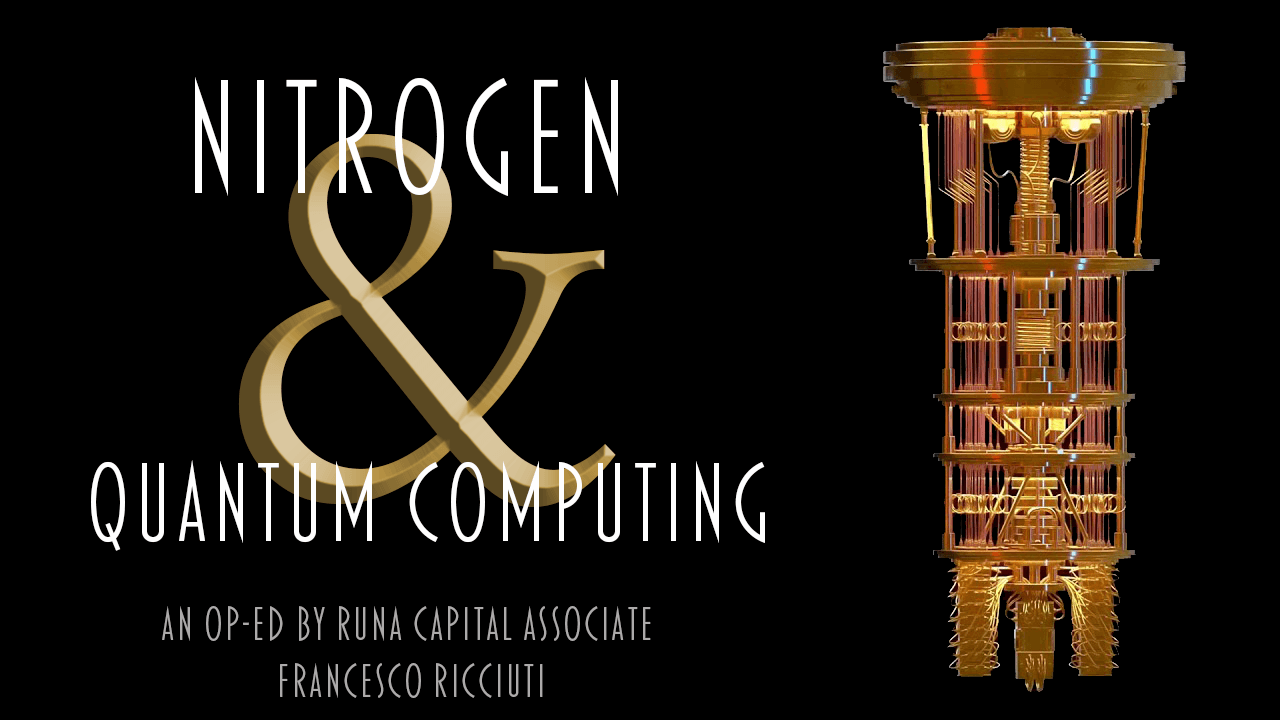When it comes to the climate emergency, we dedicate too much focus to one culprit. There’s another offender that goes virtually unnoticed and it’s almost criminal: Nitrogen.
Nitrogen is everywhere. As the fourth most common element in our bodies, it’s in our blood, proteins, and DNA. Every breath we take is almost 80% nitrogen and plants thrive on the chemical element for their growth.
For much of history, nitrogen has been our friend. In the air energy from lightning in thunderstorms breaks nitrogen and the rain carries through the soil. In the ground, certain bacteria, often found in crops and legumes, can also break nitrogen.
This is called nitrogen fixation and forms part of the “Nitrogen Cycle”. It’s here where plants get nitrogen and made the food early humans needed to survive. It’s also why crops are rotated as it helps replenish the soil with nutrients.
Humans have been manipulating it for nearly 8,000 years. They used natural fertilizers to boost the crop production but as our population exploded, these natural sources of nitrogen weren’t enough. The process of applying manure to crops is tedious and inefficient. The nitrogen in manure often evaporates before it can be absorbed into the soil. Therefore, humans needed a new way to produce lots of nitrogen to feed the world.
Chemists had been attempting to fixate nitrogen since the early 1800s but without success. It’s difficult because the triple bond that holds two nitrogen atoms together in the air that we breathe is very strong. It needs something powerful, like lightning, to break it.

Then in 1909, Fritz Haber, a young German chemist at the University of Karlsruhe, became the first person to synthesize ammonia in a lab. His discovery is regarded as one of the most important ones in modern history. Haber decided to use heat, pressure and a catalyst to lower the energy needed to break nitrogen. He succeeded, which allowed for the creation of ammonia, a Nitrogen-based fertilizer, which is rich in nitrogen.
Thanks to nitrogen-based fertilizers, average crop yields have grown five-fold worldwide. In the US, corn yields exploded from 1.6 t/ha to 8.5 t/ha in the previous century. Haber’s discovery means we can feed 8 billion people by cultivating just 15% of the world’s total land area. Without it, we would need to cultivate 50% of all ice-free continents. It’s little wonder Haber was awarded the Nobel Prize in 1918.
Yet, Haber uncorked the climate crisis.
Global ammonia production accounts for around 450 Mt of CO2 emissions. That’s 35% of the emissions of the whole chemical sector. If ammonia production were a country, it would be the 16th most polluting. Ammonia pollutes much more than steel and cement in terms of tons of CO2 emitted per ton produced, with 2.4 t CO2/t.
It gets worse. CO2 emissions aren’t the only negative of ammonia. Plants absorb around half of the available nitrogen, the rest is released into the atmosphere as nitrous oxide. This is a greenhouse gas that’s 300 times worse than CO2. It also pollutes the air and water in other compounds and contributes to soil degradation and lower biodiversity.
Technology can come to the rescue.
The Haber process requires high temperature and high pressure, which is energy intensive. We use catalysts to minimize this but they aren’t efficient. They only work at high temperatures but the yield of ammonia falls by as much as 40% in hot environments. You can improve yields with high pressure but, like with high temperatures, this requires lots of energy.
Quantum computers can simulate the reaction on a molecular level and design better catalysts, which improve the efficiency of the Haber process. These catalysts can work at lower temperatures and lower pressure, which has the double benefit of lower energy usage and better yields.
Until recently, this approach has been limited because we simply lack the computing infrastructure to solve the required calculations.
With advancements in quantum computing, things are set to change. We need around 1,000 qubits to simulate the Haber process. Computer giant IBM expects to have 1,000 qubit quantum computers this year.
To date, researchers have proposed point-of-use sensors and machine learning modeling to understand when and in what amount to provide nitrogen to the soil. The amount of data required to be analyzed, and the necessity for these calculations to be performed on the edge, have prevented the wide use of these technologies so far.
The technological barriers to using Machine Learning products are tumbling at increasing speed, these solutions become more and more deployable on a larger scale.
Nitrogen is essential for life on Earth, but it is also a major contributor to climate change. The Haber process has propelled our prosperity but is now problematic. Quantum computers and computational chemistry have the potential to make a significant contribution to the fight against climate change.
It is important to note that these technologies are still in their early stages of development, and it will take time and investment to bring them to scale. However, the potential benefits are significant, and it is worth investing in these technologies to help us address the climate crisis.



Would you like to write the first comment?
Login to post comments